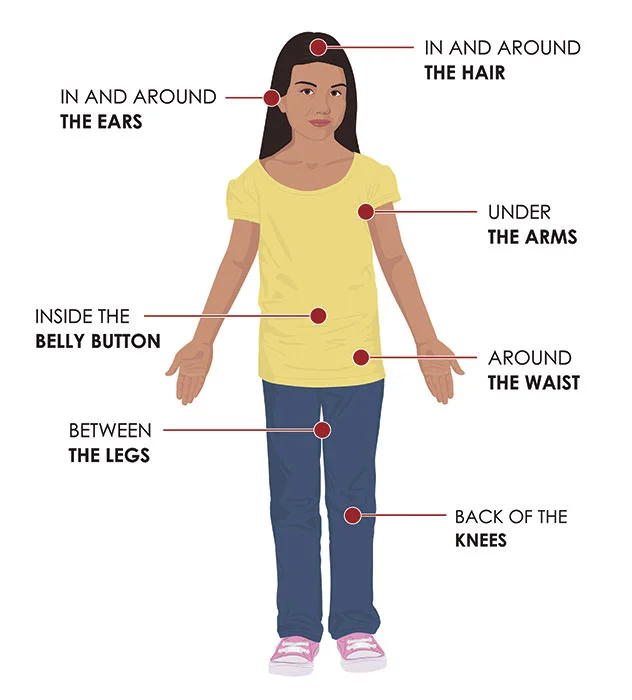Get Ready for an Uptick In Lyme Disease Cases in 2021

With Memorial Day upon us, it’s time to double-down on your Lyme Disease preventation. While the pandemic dominated the news for over the past year, the incidence of tick-borne diseases continued to rise in the United States as Lyme Disease and Co-Infections spread to more parts of the country.
Here’s what you need to know in order to protect yourself and your family from tick bites this year:
- Where to expect ticks: We all know that ticks are frequently found in wooded and brushy areas or fields with high grass, but they can also make their home in your back yard. Ticks like to inhabit the shady areas of your yard as well as those areas of your yard that are adjacent to the woods, to a field, or to stone walls/wood piles.
- Check out the Lyme Disease Association’s Guide to Property Prevention: Quick Tricks to Stop Ticks for ways you can make your yard less inviting for ticks.
- Consider taking part in research effort behind the Tick App that provides info on tick exposure in your area as well as allows you to report tick activity in your area. This research project is performed by Columbia University & the Northeast Center of Excellence for Vector-borne Diseases.
- What to wear when outdoors: Dressing for success can make all the difference when it comes to preventing a tick bite. Here’s what to wear:
- Wear light-colored, long sleeved shirts & pants.
- Tuck your pants into your socks & tuck your shirt into your pants.
- Consider using a tick repellent. Check out the EPA’s & EWG’s advice on repellents.
- What to do after spening time outdoors: Time to do a thorough tick check on yourself, your family & your pets. Here’s the checklist:
- Check your clothes, pets, and gear for ticks before entering your home or car.
- Change out of your clothes completely. You can put dryer-safe clothing articles in the dryer on high heat for 30 minutes to remove any clinging ticks.
- Take a Shower: Showering can help you both identify & wash off any ticks that may be crawling on you.
- Check yourself & others for ticks: This is one of the most important steps to take as ticks can crawl all over you without your ever noticing it. Conduct a full body check and pay special attention to these areas:

- What to do if you find a tick: There is a right way and a wrong way to remove a tick.
- Watch this video from the Lyme Disease Association on proper technique for removing ticks.
- Contact your healthcare provider for next steps.
- Save the tick in case by carefully putting it in a sealed ziploc bag in case your health care provider recommends that it be tested. (It’s important to note that although the tick you removed may carry several bacteria, not every bacteria was transmitted to you.If you elect to get the tick tested, you will most likely be responsible for the cost of testing.)
- What acute Lyme Disease looks like: Less than one fifth of the people diagnosed with Lyme Disease get the classic bull’s eye rash. Early symptoms of Lyme Disease can appear anytime from 3 – 30 days after being bitten by a tick. Be sure to contact your healthcare provider if you have any of the following symptoms which may indicate acute Lyme Disease:
- Flu-like symptoms: fatigue, sore throat, muscle aches & pains, fever, chills, stiff neck.
- Rash
- Joint Pain
- Headache
- Swollen Lymph Nodes
If you suspect you may have been bitten by a tick or have symptoms suggestive of Lyme Disease, be sure to contact your healthcare provider. Early treatment is important for having a successful outcome and preventing Chronic Lyme.
If you would like more information on testing for Lyme Disease or Co-Infections, please contact us.
References:
www.cdc.gov/lyme/index
www.lymediseaseassociation.org/
www.thetickapp.org/
The contents of this blog are intended for educational purposes only. The information presented here is not a substitute for proper medical attention, diagnosis, or treatment by a qualified healthcare professional. Always seek the advice of your healthcare provider before starting or making any changes to an existing treatment plan, exercise program or dietary regimen, and before using nutritional supplements.
Related Posts
- Routine cholesterol testing often fails to identify important risk factors for heart disease, heart attacks or stroke. In fact, most cholesterol panels only measure of…

- At least 10% of people who have had Covid-19 suffer from long-term symptoms, called Long Covid or Post-Covid Conditions. Due to the fact that Long…

- Autoimmunity is a form of friendly fire where your immune system attacks your own tissue. This condition has three faces or stages: Silent Autoimmunity, Reactive…




